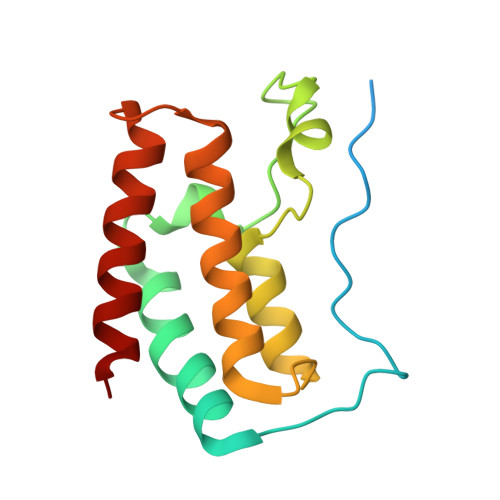Identification of a novel orally bioavailable ERK5 inhibitor with selectivity over p38 alpha and BRD4.
Myers, S.M., Miller, D.C., Molyneux, L., Arasta, M., Bawn, R.H., Blackburn, T.J., Cook, S.J., Edwards, N., Endicott, J.A., Golding, B.T., Griffin, R.J., Hammonds, T., Hardcastle, I.R., Harnor, S.J., Heptinstall, A.B., Lochhead, P.A., Martin, M.P., Martin, N.C., Newell, D.R., Owen, P.J., Pang, L.C., Reuillon, T., Rigoreau, L.J.M., Thomas, H.D., Tucker, J.A., Wang, L.Z., Wong, A.C., Noble, M.E.M., Wedge, S.R., Cano, C.(2019) Eur J Med Chem 178: 530-543
- PubMed: 31212132
- DOI: https://doi.org/10.1016/j.ejmech.2019.05.057
- Primary Citation of Related Structures:
5LRQ, 5O7I - PubMed Abstract:
Extracellular regulated kinase 5 (ERK5) signalling has been implicated in driving a number of cellular phenotypes including endothelial cell angiogenesis and tumour cell motility. Novel ERK5 inhibitors were identified using high throughput screening, with a series of pyrrole-2-carboxamides substituted at the 4-position with an aroyl group being found to exhibit IC 50 values in the micromolar range, but having no selectivity against p38α MAP kinase. Truncation of the N-substituent marginally enhanced potency (∼3-fold) against ERK5, but importantly attenuated inhibition of p38α. Systematic variation of the substituents on the aroyl group led to the selective inhibitor 4-(2-bromo-6-fluorobenzoyl)-N-(pyridin-3-yl)-1H-pyrrole-2-carboxamide (IC 50 0.82 μM for ERK5; IC 50 > 120 μM for p38α). The crystal structure (PDB 5O7I) of this compound in complex with ERK5 has been solved. This compound was orally bioavailable and inhibited bFGF-driven Matrigel plug angiogenesis and tumour xenograft growth. The selective ERK5 inhibitor described herein provides a lead for further development into a tool compound for more extensive studies seeking to examine the role of ERK5 signalling in cancer and other diseases.
- Newcastle Drug Discovery, Northern Institute for Cancer Research, School of Chemistry, Bedson Building, Newcastle University, Newcastle Upon Tyne, NE1 7RU, UK.
Organizational Affiliation:

















